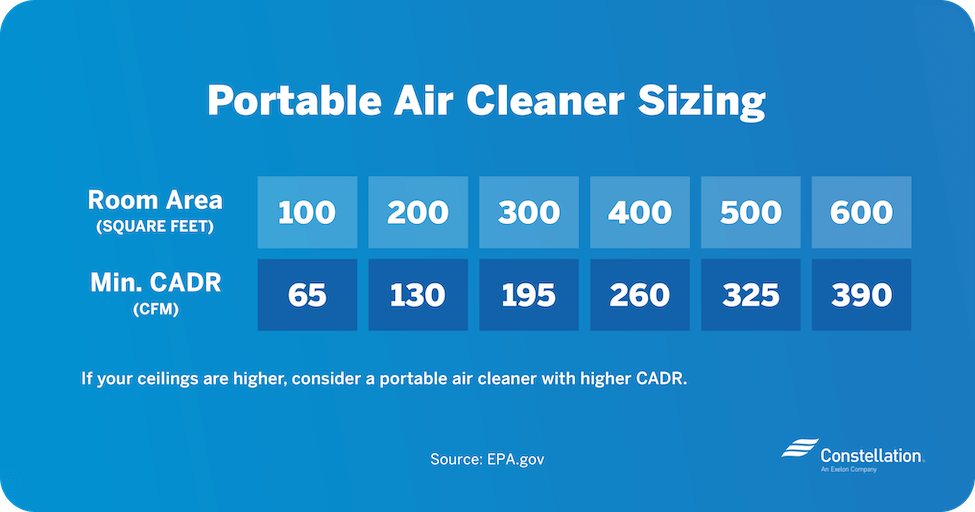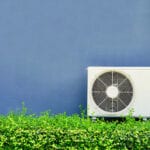According to the US Consumer Product Safety Commission, the average American spends an average of 90 percent of their lives indoors. As a result, many Americans are exposed to a wide range of indoor air pollutants over long periods of time. This is especially true in their homes—a problem scientists have identified as one of the most important environmental issues in the United States.
That’s even more true now, since insulating walls against home air leaks can concentrate indoor pollutants. And while knowing how to seal a door against the cold is important for warmth and energy conservation, it can also unintentionally increase the level of indoor air pollution.
While contact with individual air pollutants may cause minimal harm, chronic or long-term exposure to multiple indoor air pollution sources can negatively impact overall health and well-being. This especially affects the young, the elderly and those suffering from chronic illnesses, who are among those most susceptible to the effects of indoor air pollution.
Since 1987, the EPA has connected indoor pollutants to a significantly increased risk of cancer. Fortunately, it’s relatively easy to improve indoor air quality by using energy-efficient air purifiers. If you’re wondering, What do air purifiers do?, or Do I need an air purifier?, you’re not alone. Everything will become clear – including the air you breathe.
What is the ideal indoor air quality?
Indoor air quality is a way to quantify the number of pollutants present as well as the temperature and relative humidity of the air in a building. Ideal indoor air quality has as little air pollution as possible, combined with a comfortable temperature and ideal home humidity levels. Individual states have their own more precise definitions of ideal air quality, depending on factors like season and climate.
Do I need an air purifier? How will I know?
You may be wondering, Do I need an air purifier? Sometimes homeowners notice strange odors or experience increased allergy-like symptoms such as wheezing or coughing, and they realize the cause is poor indoor air quality.
In other cases, air pollution may not produce noticeable symptoms. And a home air quality test kit can help identify possible pollutants. You can purchase such tests online or hire the services of an air quality professional.
Effects of Indoor Air Pollution
The effects of indoor air pollution vary depending on the nature of the contaminant. The EPA reports that many people experience eye, nose, throat and mouth irritation—often after a single exposure to the pollutant.
Headaches, dizziness and fatigue are also common problems, and people who live with allergies or asthma may find that their symptoms worsen. The effects of air pollution may be immediate or may take months or years to develop.
Indoor Air Pollution Sources
Indoor air pollution comes from many different sources. Molds, animal hair and dander, spores, pollen, dust mites, and bacteria are all common, as is environmental tobacco smoke.
Gases such as radon may seep into the house through cracks in the foundation, floors or walls, while older buildings may expose residents to gases from asbestos, formaldehyde and lead. Even cooking fumes contribute to indoor air pollution.
Benefits of Air Purifiers
Improving indoor air quality can prevent a wide range of health problems and boost your overall sense of wellness in addition to your enjoyment of your living spaces. So, what do air purifiers do to help?
Air purifiers remove the fine particulates of pollution from the air to improve indoor air quality. The best air purifiers capture extremely small particles, including bacteria. Air purifiers can be portable, as is the case with the Sharp Air Purifier with HEPA Filter, or they can be installed as part of your existing central heating or air-conditioning system.
If you have a centralized filter, using energy-efficient ceiling fans to circulate clean air can help freshen the atmosphere throughout your home.
What are the benefits of air purifiers?
Using air purifiers in your home can offer the following benefits:
- Improved air quality.
- Reduced airborne particles and gases.
- Improved cardiovascular and respiratory conditions.
- Decreased asthma and allergy symptoms (even the best air purifiers may not be able to eliminate all symptoms, but some will improve).
- No significant bump in energy use if you choose an energy-efficient air purifier.
- Reduced unpleasant odors from pets or cooking or both.
- Less pollen, animal dander, mold spores and bacteria.
MPM Air & Heat Pro Tip! While they remove mold spores from the air, air purifiers cannot eliminate the source of the mold. Identifying possible mold locations and learning how to clean your air ducts can help to reduce your exposure to mold spores.
How Do Air Purifiers Work?
Air purifiers pull air into a series of filters that trap airborne contaminants. Then, the fan recirculates the purified air back into the room.
The best air purifiers trap airborne particles as small as 2.5 micrometers, including organic compounds and byproducts from motor vehicles, fire and cigarette smoke, and some industrial processes. This is an important consideration because our bodies have no defense against such small particles, thus allowing pollutants to enter and cause potential damage to the lungs.
What is CADR?
When choosing an air purifier for your home, opt for one with a high CADR. CADR, or clean air delivery rate, is a measurement of how many particles the air purifier can filter and how large a room the purifier can clean. The higher the CADR for an air purifier, the larger the space it can keep clean.
Selecting the Right Size Air Purifier for Your Home
To improve indoor air quality, an air purifier must have an appropriate CADR for the area in which you’ll use it. Determine the square footage of the space that needs air purification, then compare it to the CADR for the air purifier to select the right size.
For an open floor plan with no walls, you’ll need the square footage of the entire floor. The height of the room’s ceiling also matters. If your ceiling is higher than eight feet, you’ll need an air purifier with a higher CADR.
Compare the square footage of the space where your air purifier will be located to the table below. Remember, the higher the CADR, the larger the area the purifier can clean.
Different Types of Filters for Energy-Efficient Air Purifiers
Different models of air purifiers are designed to filter different types of air pollutants, with a wide range of efficiency. Three filter types dominate the air purifier industry. Some only need to be replaced once a year, while others require more frequent changes depending on the manufacturer’s instructions and the frequency of use.
Air Purifier HEPA Filters
Sterile HEPA filters are ideal for removing ultrafine airborne particles and excellent at purifying air contaminated by mold spores or smoke.
Air Purifier Activated Carbon Filters for Air Purifiers
Activated carbon filters (also known as activated-charcoal filters) are effective at removing volatile organic compounds and gases.
Air Purifier Prefilters
The best air purifiers use a prefilter to trap larger particles before moving the air through HEPA or activated-charcoal filters.
This prevents the finer filter from getting clogged up with large particles, allowing it to more effectively remove smaller particles from the air. A prefilter prolongs the working life span of both HEPA and carbon filters.
How long should I run my air purifier?
How long you should run your air purifier depends on two factors: the manufacturer’s instructions and the specific air purifier energy consumption. If you require a model capable of running all day, be sure to shop for energy-efficient air purifiers.
How much electricity does an air purifier use?
According to Energy Star, the average air purifier consumes 550 kilowatt hours per year in electricity, or approximately as much energy as a modern refrigerator.
If you’re concerned with energy conservation, choose an air purifier with the Energy Star label. These energy-efficient air purifiers consume 40 percent less energy than other models, reducing your air purifier energy consumption by 225 kilowatt hours per year.
MPM Air & Heat Pro Tip! Reduce your air purifier energy consumption even further by pairing the device with a smart plug to link the purifier to your smart home routines. Using a smart plug helps you monitor energy use and remotely control the air purifier from any location.
Are air purifiers safe to use? What about ionic air purifier dangers?
You may have heard concerns about ionic air purifier dangers. Do air purifiers work safely? Most air purifiers are completely safe, but specific models utilize ionizers. Ionizers create negatively charged ions and then discharge them into the air. The ions attach to positively charged airborne particles, creating clumps of heavier-than-air particles, which fall to the ground.
Due to this process, many ionic air purifiers produce ozone as a by-product. And depending on your space, or how air flows or ventilates, extended use of ionic air purifiers may lead to a buildup of ozone gas in your home.
For this reason, only look for ionizers that are calibrated so ozone production does not exceed 50 parts per billion. For a list of ionic air purifiers that exceed this limit, click here.
Do air purifiers work? Definitely, but you can also improve indoor air quality in other ways. Improving home and attic ventilation, running exhaust fans in kitchens and bathrooms, upgrading to better quality HVAC filters, identifying any home air leaks, and fixing foundation damage can all help keep the air in your house cleaner and thus produce a better, safer environment for everyone.
The post Choosing the Best Air Purifier and Eliminating Indoor Air Pollution appeared first on Constellation Residential and Small Business Blog .






